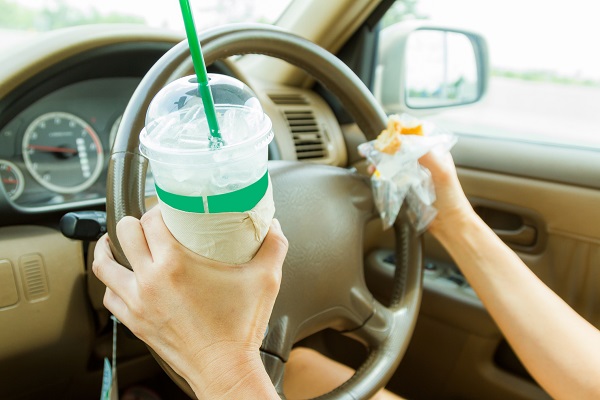April Is Distracted Driving Awareness Month

The National Highway Traffic Safety Administration (NHTSA) continues to warn that during the pandemic, there has been a sharp increase in traffic fatalities. For example, during 2020, though people in the U.S. spent substantially less time behind the wheel, an estimated 38,680 people died in motor vehicle traffic crashes—the largest projected number of fatalities since 2007. The trend continues in 2022. “This is a crisis,” said U.S. Transportation Secretary Pete Buttigieg. “We cannot and should not accept these fatalities as simply a part of everyday life in America.”
The data show that throughout the pandemic and lockdowns, driving patterns and behaviors changed significantly. Drivers were more likely to speed and less likely to wear their seat belts. Alcohol overconsumption and other substance abuse increased, leading to a rise in impaired driving. Stress and frustration led to aggressive driving and road rage. And many accidents were caused by distracted driving.
Now and always, distracted driving is dangerous. According to NHTSA, almost 10% of fatal crashes are caused by distracted driving. Every year thousands of people are killed in these accidents—not only drivers and passengers, but also cyclists and pedestrians.
Anything that takes our attention away from our driving can be dangerous. We can be visually distracted, taking our eye off the road. We can be manually distracted, taking our hands off the wheel. And we can be cognitively distracted, with our mind off our driving. According to AAA, 70% of drivers talk on the phone while driving, 30% of them quite often. Almost half report reading a text message or email at least occasionally. Distracted drivers eat, shave, drive with a pet in their lap, put on makeup or even take a selfie.
Statistics show that teens and young adults are the most likely to drive distracted. Many older adults also talk on the phone while driving, or use dashboard features that cause inattentiveness. This can be especially dangerous when a driver is dealing with memory loss, slower reflexes or changes to vision, hearing and flexibility.
Experts have been studying this deadly problem. Here are some of their findings:
Even a moment of inattentiveness can cause an accident. Research from AAA found that taking our eyes off the road for even five seconds is dangerous. If you’re traveling at 55 mph, you’ll cover the length of a football field in that time.
Smartphones create temptation. Turn off your phone while you’re driving, silence it, or put it in the trunk. Look into an app or feature that will disable texting and phone calling when you’re driving and send an autoreply that you’re driving and temporarily unavailable.
Talking on the phone is much more distracting than talking to a passenger. Experts explain that this is because passengers can see what the driver is seeing, and they instinctively modulate their conversation accordingly, maybe even pointing out hazards. But a person on the other end of a cell phone conversation has no idea that a truck suddenly braked right in front of you. (Of course, if you’re having an argument or other intense talk with your passenger, it’s better to pull over.)
Hands-free doesn’t mean risk-free. Talking on the phone even if you’re not holding it is still dangerous and distracting. A University of California San Diego study found that talking on a hands-free phone increases the risk of crashing to the same degree as driving at the legal alcohol limit.
Today’s dashboard infotainment systems make the situation worse. Experts say our modern navigation systems, complicated entertainment features, speech-to-text and text-to-speech features can be tremendously distracting, providing more temptation to look away or to pay less attention to the driving task. According to the National Safety Council, voice-to-text communication is even more distracting than texting by hand.
What about music, listening to the radio or books on tape? Though older adults who find multitasking more challenging might want to avoid this extraneous sound, AAA research found that these activities are relatively safe—if drivers think ahead, getting everything ready and adjusting the volume while the car is still in park. And while you’re at it, put on your sunglasses, adjust your seat and mirrors, get your navigation system ready, and take care of other pre-trip tasks—including, of course, putting on your seatbelt.
Source: IlluminAge

